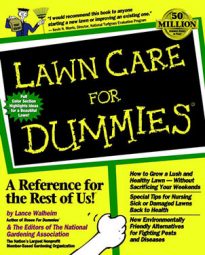Your climate zone is not the only factor that determines what kind of grass you should plant in your lawn. Your yard space might have its very own microclimate. Say you live in North America — the Midwest. Now even more specifically, say you live on the outskirts of Detroit, Michigan. (Go Tigers!) You may have a pretty good idea of what your overall climate is like — cold winters and warm, humid summers with frequent rain. Cool-season grasses like Kentucky bluegrass, the fescues, and ryes are probably best for you.
Microclimates differ in some way from the overall climate of your area because of the presence of some large object — usually your house, but the object also can be trees, large areas of pavement, or a body of water.
Try taking a walk around your house at various times of the day, and you’ll understand the concept. In the morning, the east side of your house is sunny and warm. After noon, the east side gets shadier as the west side of your house gets sunnier and hotter. The north side of your house may be shady and cool all day. The south side may be sunny and warm all day. Each side of your house has its own little microclimate that changes, not only as the sun moves from east to west during the day, but also as the sun moves from south to north from winter to summer.
Different types or varieties of lawn grasses adapt, or don’t adapt, to the different microclimates around your home. A microclimate is one reason why it’s a good idea to use blends of different grass varieties or mixtures of different grass types when you plant a lawn. If you use several different grasses you have a better chance of having a healthy lawn over your entire property. For example, if your yard has some sunny spots and some shady spots, you may choose to plant a mixture of Kentucky bluegrasses and fescues. The Kentucky bluegrasses do great in the sunnier areas, but can thin out in the shade. The more shade-tolerant fescues can fill in the thin spots. A lawn is a cooperative situation.
You can find grass types and varieties adapted to all different kinds of conditions Check out the following list of some microclimates you may find around your home and how they may affect the grass you plant and how you care for it.
Shade: Not getting enough sunlight (less than 4 hours a day) really wreaks havoc with lawn grasses. The lawn starts to thin out, is prone to insects and disease, and just doesn’t grow well. Your house, other buildings, trees, or even fences can create shade. Certain grasses, including the fescues (particularly fine fescue) among the cool-season grasses and St. Augustine grass among the warm-season grasses, are more tolerant of shade than others. You can even find some varieties of specific grasses that are more shade-tolerant than others.
Some cultural techniques enable grasses to survive in shade. You can mow higher; water deeply but less often (making sure to let the grass dry out between waterings); water in the morning so that the grass dries by night; fertilize less; and keep people from walking on it. Reducing the amount of seed lets each seedling have less competition for light.
Oh, yes, and don’t forget, you can always prune the trees to let in more light underneath. Better yet, plant shade-loving ground covers instead.
Sun: Intense sunlight reflected from the side of a light-colored wall can cause a nearby lawn to dry out faster. If you don’t compensate and apply more water to those areas, the grass gradually declines and is vulnerable to weeds and insect invasion.
Heat: Warmth stored in pavement, such as driveways, patios, and walkways, radiates out into nearby lawn areas. These parts of the lawn are quick to dry out and are subject to various pest problems. You have to water these areas more often.
Slope: Sloping or hilly ground dries out faster than other areas of a lawn, especially if it’s south-facing. The water just drains away faster. These areas need more frequent watering than others.
Soil: Types of soil also may vary around the house and landscape. Subsoil can be more hostile to grasses than native topsoils. soils

